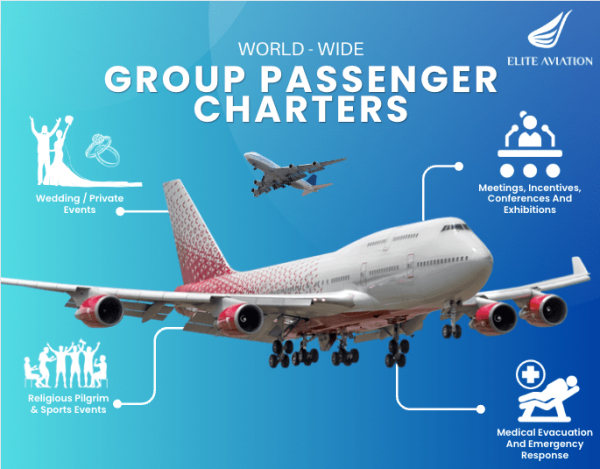Have you ever noticed the disparity between flight times when going to and returning from one city? For instance, flying from London to New York takes just over 8 hours, while the reverse journey takes under 7 hours. Similar results can be found when flying from the West to the East. Here’s why it is quicker to fly eastwards.

Nothing to do with rotation
While many might think the earth’s eastward rotation is the reason behind the faster eastbound journeys, this isn’t accurate. The earth’s rotation actually has nothing to do with the speed of a flight, as NASA’s Robert Frost explains in Forbes. Just like the rotation of the earth doesn’t speed us up while walking from east to west, similarly, it does not affect a plane’s speed either.

The rotation of the earth is only an indirect factor in explaining why plane journeys are faster when flying eastwards, despite looking like the intuitive answer. The real answer has to do with a concept known as jet streams.
Jet stream
The reason for quicker flights while flying eastwards are jet streams. Put simply, they are fast-flowing, narrow air currents in the atmosphere found at high altitudes. These currents are formed due to atmospheric heating from the sun’s radiation and the earth’s Coriolis force (defined as a rotating object has a force perpendicular to the rotation axis). These factors cause combined caused jet streams.
The most prominent jet streams are the polar stream and subtropical streams, located at 60 and 30° north and south of the equator. The former is the stronger stream, causing much faster winds than the latter. Most airlines on transatlantic and transpacific routes use the polar stream while planning flight paths.

Jet streams can be as strong as 80 to 140 miles per hour, going all the way up to 275 miles per hour. These strong winds come with significant upsides and downsides for commercial air travel and could be changing soon.
Shorter flights
The first time jet streams came to use in commercial aviation was in 1952 on a flight from Tokyo to Honolulu. Flying along jet streams cut the journey down from 18 hours to a mere 11.5 hours, flying just under 25,000 feet. Airlines quickly realized the value of jet streams and started implementing them while planning routes.
Since the jet streams flow from the west to east, they make one leg of the journey much faster (when flying with the stream) and one slower (against the stream). Returning to the example from New York to London, we see flights may take even a slightly longer route to benefit from the jet stream. This means the journey from JFK to LHR can take around six and a half hours, the flight from LHR to JFK takes seven and a half hours.

Even on shorter transcontinental flights between cities New York and Los Angeles, jet streams can impact the flight time by nearly an hour. On long-haul transpacific routes, these streams can be extremely helpful for passengers and airlines. By following the polar stream, flight time from Tokyo to Los Angeles is just nine hours and fifty-five minutes, versus the 11 hours and forty-five minutes in reverse.
Last February, a British Airways 747 beat the transatlantic subsonic speed record thanks to strong jet streams. The aircraft made the JFK to LHR hop in just four and fifty-five minutes, a brand new record, flying at the speed of over 800 miles per hour.
In short, jet streams can drastically cut down flight times and reduce fuel burn, both their important revenue and environmental concerns for airlines. While this sounds like a win-win for passengers and airlines, there are some drawbacks.
Safety risk
While jet streams can speed up flights, they do have a significant drawback: clear air turbulence. Clear air turbulence (CAT) is sudden severe turbulence that occurs in a cloudless sky, causing violent shaking of the aircraft. It occurs when a slow jet stream interacts with a fast jet stream, creating a pocket of extreme disturbance. CAT is also impossible to visually detect or by aircraft radar, unlike other forms of turbulence.

According to a report in Conde Nast Traveler highlights a study that says CAT is set to rise in frequency by 170% and become worse due to global warming. This means flying through jet streams will only become riskier in the coming years.
One major CAT accident occurred onboard United flight 826 from Tokyo Narita to Honolulu International in 1997. This happens to be the exact route when jet streams were first used on a commercial route.
Sudden CAT caused the aircraft to fall 100 feet, causing severe spine and neck injuries to 18 passengers. One passenger, who wasn’t wearing their seatbelt, died due to the sudden turbulence, highlighting the threat of CAT.
Other issues
While the flight time might be shorter when flying from west to east due to jet streams, that doesn’t particularly help passengers. Studies seen in Travel and Leisure have shown that passengers suffer from more jet lag on eastbound flights, which means shorter flights leave lesser time to adjust and grab some shut-eye on such long-haul routes.

In summary, jet streams are the reason why flights take shorter when flying from the west to the east, than the other way around. While they do help to shave off a few hours off extremely long flights in some cases, they do come with some significant drawbacks too.
Do you notice the difference in flight time when flying in either direction? Should airlines avoid jet streams due to the growing risk? Let us know your thoughts in the comments!
[ad_2]
Source link


